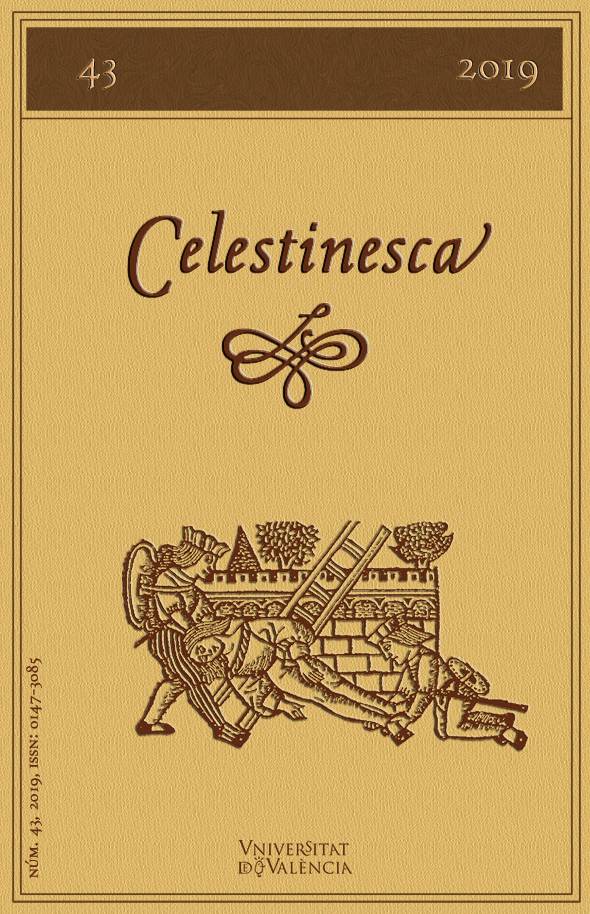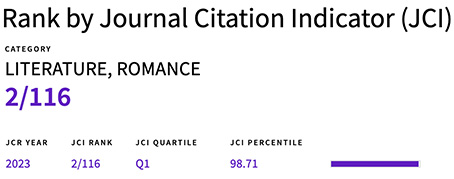Foreshadowing in Ruano de la Haza’s twenty-first century adaptation of Rojas’ Celestina
DOI:
https://doi.org/10.7203/Celestinesca.43.20244Keywords:
Irony, Foreshadowing, Contemporary adaptations of Rojas’ Celestina, Ruano de la Haza’s 2004 version Abstract
Abstract
Ruano de la Haza’s 2004 version of Rojas’ Celestina (ca.1499/ca.1502) can be regarded as an adaptation of the Spanish work intended to be represented on the stage. One of its formal and thematic peculiar traits is its inclusion of a free rendering of Pleberio's soliloquy, which becomes both the Prologue and a closing monologue. As a result, the audience receives an edition with a circular structure, and gets familiar with the denouement of the story from the very beginning, regardless of whether they have been familiar with it or not. Foreshadowing has traditionally been regarded by criticism (e.g. Kayser-Philips 1974) as a structural element of Celestina, which is also linked to the ironic perspective adopted by the author. In this sense, this paper sets out to study whether this form of irony has been reflected in Ruano de la Haza's edition, and, if this is the case, the ways, the reasons and the purposes for which it has been so done, no matter if the audience knows the denouement of the plot from the beginning.
 Downloads
Downloads
Downloads
Published
How to Cite
-
Abstract358
-
PDF184
Issue
Section
License
![]() Celestinesca is committed to the dissemination of knowledge, that is why access to its contents is free and is ruled by a Creative Commons Attribution-NonCommercial-NoDerivatives 4.0 license.
Celestinesca is committed to the dissemination of knowledge, that is why access to its contents is free and is ruled by a Creative Commons Attribution-NonCommercial-NoDerivatives 4.0 license.
Authors retain the rights to their works. Therefore, they can disseminate them and deposit them in the repository, institutional or not, that they wish. However, they are kindly requested to do so by providing the full bibliographic reference and the corresponding DOI.
Celestinesca does not charge authors for submitting, processing, reviewing or publishing their articles.





